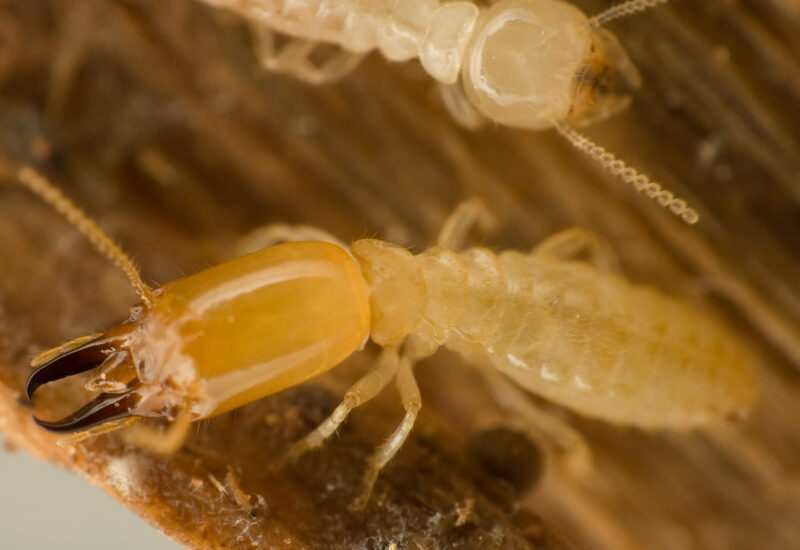Honey Bee Swarms

With the weather quickly heating up, Catseye’s phones have been ringing off the hook with people who need help managing the bees around their homes and properties. You’ve been hearing a lot about these black and yellow little guys on our blog. A few weeks ago Gary wrote a great story about honey bees as part of his Tough Job Series.
Last week, we received an interesting phone call at our Carson City, NV office. A woman called saying, “I see these strange bugs flying in formation across my backyard. They came closer and closer and sounded like a helicopter, then suddenly they moved into a tree and started stacking on top of one another in a cone shape in the tree.”
This strange spectacle was a honey bee swarm. When a honey bee queen feels threatened, she takes to the air with all the bees from her hive to look for a new home. This type of migration is called a swarm. The honey bees will continue their search until they find an adequate cavity with 5 to 10 gallons of space with an opening about the size of a quarter. This could be your electrical box or a wall void in your house.

There are two prominent kinds of honey bees that you may see swarming in the United States: the Eastern European Honey Bee and the Africanized Honey Bee. Although when examined under a magnifying glass the Eastern European Honey Bee is a little larger, the main way to tell the difference between the two types of honey bees is the way they behave.
Eastern European Honey Bees were brought to North America by the ships of Spanish explorers. They swarm one or two times a year and their swarm is much larger than Africanized Honey Bees, about the size of a five-gallon bucket. The Eastern European Honey Bee is the most common type of honey bee in the areas that Catseye serves in New England.
Africanized Honey Bees exist as the result of a failed experiment. In the 1950s, a scientist brought honey bee queens from Africa to Brazil in an attempt to create a superior honey bee. The bees swarmed and mated with European Honey Bees in the wild. This hybrid is what we now call the Africanized Honey Bee. They thrive in warm, tropical areas in the Southern United States where there are exotic flowers, and are more aggressive than the Eastern European Honey Bees. If there is someone somewhat near the swarm and is found by one of the guard bees out searching for a new pollen area, they will probably attack and sting the “intruder” until they run him or her out of the area. Africanized Honey Bees swarm 10 or more times a year and their swarms are about the size of a softball.
A honey bee swarm resting on your property is best left alone. They will move on in a day or so as they search for a new home. Don’t approach the swarm or spray with water, this will only irritate the honey bees. If you think honey bees have decided to move in with you for a longer stay and you are worried about beestings, please give us a call. As honey bees are important to our environment, Catseye would prefer to contact licensed beekeepers to safely transport the hive to a new area rather than exterminate, and we will do our best to arrange that transport so your home can return to being bee-free.






